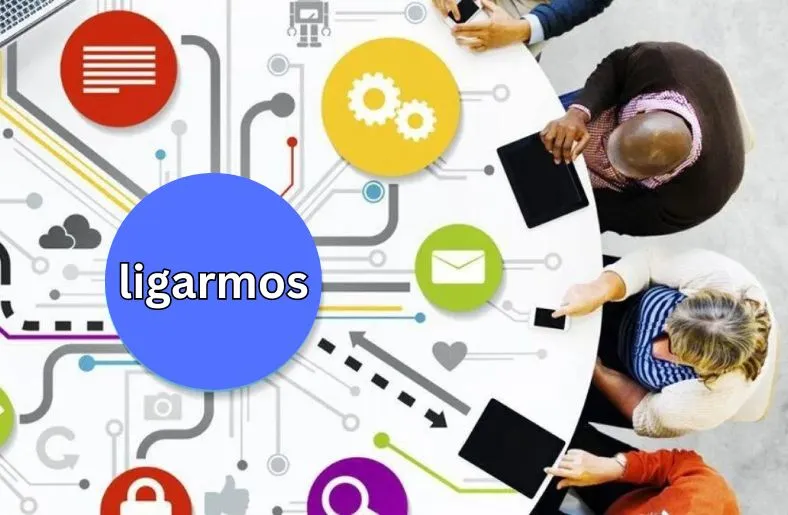Introduction
Step into a world where teamwork knows no bounds – where the digital realm meets human ingenuity. Ligarmos, the beacon of modern collaboration, stands at the forefront of this revolution. As we navigate the ever-evolving landscape of digital interaction, Ligarmos emerges as a guiding light, illuminating the path towards seamless teamwork and communication.
In today’s fast-paced environment, collaboration isn’t just desirable; it’s essential. From small businesses to multinational corporations, the ability to work together efficiently can make or break success. But traditional methods of collaboration often fall short in meeting the demands of the modern world. That’s where Ligarmos comes in – a game-changer in the realm of digital collaboration.
In this article, we embark on a journey to explore the potential of Ligarmos in reshaping how we work together. From its inception to its current applications, we delve deep into the intricacies of this innovative platform. Join us as we uncover the future of digital collaboration with Ligarmos as our guide.
Understanding Ligarmos
To truly grasp the essence of Ligarmos, it’s vital to understand its inner workings. At its core, Ligarmos is a dynamic platform designed to foster collaboration and communication in the digital age. With its user-friendly interface and intuitive features, Ligarmos empowers teams to work together seamlessly, regardless of physical location.
One of the key features of Ligarmos is its versatility. From video conferencing to file sharing, Ligarmos offers a wide range of tools to suit the needs of any team. This adaptability ensures that teams can communicate effectively and efficiently, no matter the task at hand.
Moreover, Ligarmos is more than just a tool – it’s a mindset. By promoting transparency and accountability, Ligarmos encourages a culture of collaboration within organizations. Teams can easily share ideas, provide feedback, and track progress, all within the Ligarmos platform.
Additionally, Ligarmos prioritizes security and privacy. With robust encryption and strict access controls, teams can rest assured that their data is safe and secure. This commitment to security is crucial in today’s digital landscape, where cyber threats are ever-present.
The Current Landscape of Digital Collaboration
In today’s digital landscape, collaboration is more important than ever before. With the rise of remote work and distributed teams, organizations are seeking innovative solutions to foster teamwork and communication. Enter Ligarmos – a cutting-edge platform that is revolutionizing the way teams collaborate in the digital age.
Traditional methods of collaboration, such as email and phone calls, are no longer sufficient for today’s fast-paced business environment. Teams need real-time communication and seamless integration of tools to stay productive and efficient.
Moreover, the COVID-19 pandemic has accelerated the adoption of digital collaboration tools. With many employees working remotely, organizations are turning to platforms like Ligarmos to bridge the gap between team members and ensure continuity of operations.
Furthermore, digital collaboration extends beyond traditional office settings. With the rise of freelancing and gig economy, individuals are seeking ways to collaborate with others regardless of geographic location. Ligarmos offers a solution by providing a centralized platform for teams to work together, no matter where they are located.
Exploring Ligarmos Features and Capabilities
Ligarmos boasts a plethora of features designed to streamline collaboration and enhance productivity. With its user-friendly interface and intuitive design, teams can easily navigate the platform and access its robust capabilities.
One of the key features of Ligarmos is its instant messaging functionality. This allows team members to communicate in real-time, fostering quick decision-making and efficient collaboration. Additionally, Ligarmos offers video conferencing capabilities, enabling face-to-face communication even when team members are geographically dispersed.
Another standout feature of Ligarmos is its project management tools. Teams can create tasks, assign responsibilities, and track progress all within the platform. This ensures that projects stay on track and deadlines are met.
Moreover, Ligarmos supports collaboration and file sharing, allowing team members to work together on documents and projects seamlessly. With version control and collaborative editing features, teams can avoid confusion and ensure everyone is working on the latest version of a document.
Furthermore, it integrates with third-party tools and services, enhancing its functionality and adaptability. Whether it’s integrating with cloud storage solutions or customer relationship management platforms, it makes it easy for teams to leverage their existing tools within the platform.
Benefits of Ligarmos in Digital Collaboration
Ligarmos offers a myriad of benefits for digital collaboration, revolutionizing how teams work together. Firstly, it promotes seamless communication among team members, enabling instant messaging and video conferencing for efficient exchanges.
Additionally, it enhances collaboration by providing robust project management tools. With task lists, calendars, and kanban boards, teams can organize their workflow and track progress effortlessly.
Moreover, it fosters productivity by facilitating file sharing and collaboration on documents in real-time. This ensures that team members can access and work on the latest version of files, eliminating the need for cumbersome email exchanges.
Furthermore, it promotes flexibility and scalability, making it suitable for teams of all sizes. Whether it’s a small startup or a large enterprise, it can adapt to meet the evolving needs of any organization.
Another key benefit of Ligarmos is its cost-effectiveness. By combining multiple tools into one platform, it eliminates the need for expensive software licenses and hardware infrastructure, saving organizations both time and money.
Challenges and Ethical Considerations
Despite its benefits, Ligarmos also presents challenges and ethical dilemmas in digital collaboration. Firstly, organizations may face a learning curve when implementing Ligarmos, requiring training for effective use.
Moreover, reliance on internet connectivity poses a potential challenge, as weak connections can hinder communication and collaboration efforts.
Integration difficulties may arise when attempting to incorporate Ligarmos with existing systems and workflows, requiring additional configuration and modifications.
Costs associated with it membership plans and selected features may impact organization budgets, especially for larger groups or enterprises.
Data privacy concerns may arise due to the management and storage of sensitive information on third-party servers, necessitating stringent security measures.
Technical problems such as bugs or downtime can impair Ligarmos performance, requiring prompt service from providers.
Ensuring ethical use of it is essential to maintain trust and integrity in digital collaboration efforts.
Addressing these challenges and ethical considerations is crucial for maximizing the benefits of Ligarmos while mitigating potential risks in digital collaboration.
Conclusion
In conclusion, Ligarmos stands as a beacon of innovation in the realm of digital collaboration, offering a dynamic platform that empowers teams to work together seamlessly. From its versatile features to its emphasis on security and privacy, it revolutionizes how teams communicate and collaborate in the digital age. While it presents challenges and ethical considerations, addressing these issues is crucial for maximizing its benefits. As organizations continue to embrace remote work and distributed teams, it emerges as a vital tool for fostering productivity, efficiency, and success in the ever-evolving landscape of digital collaboration.





